OVERSEAS TOUR ROUTES
【Floral Towns】12-Day 10-Night Group Tour of France, Switzerland, Italy, and Germany
Itinerary Description
Day 1: Shanghai – Paris (Direct Flight)
Itinerary:
- Departure: All travelers should gather at the designated time the day before at the airport and take a direct flight to Paris with China Eastern Airlines.
- Arrival and Sightseeing in Paris: Upon arrival, start exploring the initial impressions of the City of Light. Visit the following landmarks:
- Seine River Cruise (Including boat ticket) (UNESCO World Heritage)
- Arc de Triomphe
- Place de la Concorde
- Champs-Élysées
- Notre-Dame Cathedral
Attractions:
- Seine River Banks Several companies offer cruises and onboard dining services along the Seine River, and most provide audio guides in Chinese. You can choose to embark from iconic locations such as Notre-Dame Cathedral or the Eiffel Tower, and the cruise typically lasts about 45 minutes (longer if dining is included). Most boats are equipped with rain protection and some have air conditioning to accommodate various weather conditions. Some boats feature multilingual audio guides, so you can listen closely to learn about the sights along the riverbanks.
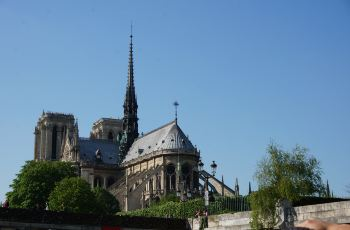

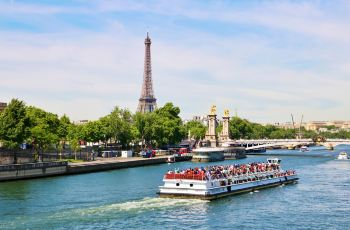
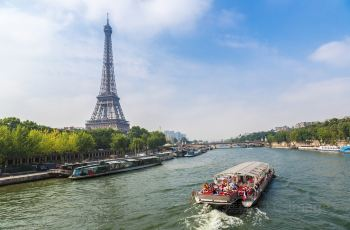
Attractions: Arc de Triomphe
The Arc de Triomphe is one of the four representative landmarks of Paris (alongside the Eiffel Tower, the Louvre, and Notre-Dame Cathedral). It is the largest arch on the Champs-Élysées, built to commemorate Napoleon’s victory in the Battle of Austerlitz in 1806. Although there are multiple triumphal arches in Paris, when people mention the “Arc de Triomphe,” they are referring to the one located in the center of Place Charles de Gaulle (formerly known as Place de l’Étoile).
On the four sides of the Arc de Triomphe, there are four massive reliefs, each representing “Departure,” “Victory,” “Peace,” and “Resistance.”
- Departure (“The Departure of the Volunteers”): The relief depicts the allegorical figure of Liberty drawing her sword to lead the people forward. This scene commemorates the “10th of August” event, a pivotal uprising in French revolutionary history that led to the collapse of the monarchy. Another name for this relief is “La Marseillaise,” which inspired the French people to fight for freedom.
- Victory: This relief portrays Napoleon’s triumphant return, accompanied by the goddess of Victory who crowns him with laurels and plays music to celebrate his achievements.
- Resistance (“The Resistance of 1814”): This relief commemorates the French people’s steadfast resistance against the Sixth Coalition.
- Peace: After experiencing liberty, victory, and struggle, peace is finally achieved. The high archway is adorned with exquisite reliefs and lavish decorations, with the names of generals and soldiers who fought alongside Napoleon engraved around it.
Below the Arc de Triomphe lies the Tomb of the Unknown Soldier, where the remains of an unidentified soldier who died in World War I are interred. He represents the over 1.5 million French soldiers who lost their lives in the war. A flame burns perpetually next to the tomb, symbolizing eternal remembrance.
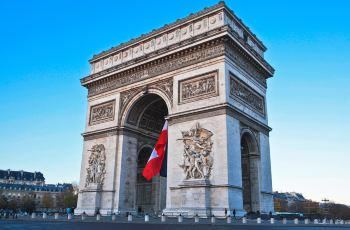
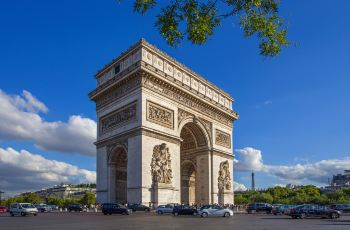
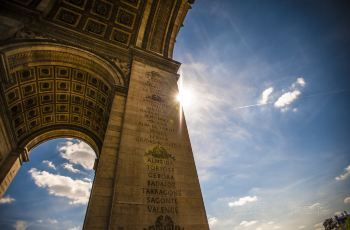

Attractions: Place de la Concorde
Place de la Concorde is one of the most famous squares in France. During the French Revolution, King Louis XVI and Queen Marie Antoinette were executed here. The square has undergone several name changes throughout its history, eventually being named Place de la Concorde, which means “Square of Concord.”
Geographical Location:
- Place de la Concorde is an octagonal square surrounded by a moat.
- To the south, the Seine River flows past the square, and the Pont de la Concorde connects the square to the Palais Bourbon, the seat of the French National Assembly, on the Left Bank.
- To the east, the Tuileries Garden lies between the square and the Louvre Palace, which was once the royal residence and was burned down by the Paris Commune in 1871. The garden houses the Musée National du Jeu de Paume, the Musée d’Art Moderne de la Ville de Paris, and the Musée de l’Orangerie.
- To the west, the square marks the eastern end of the Champs-Élysées, which leads directly to the Arc de Triomphe at Place Charles de Gaulle.
- To the north, two identical buildings flank the Rue Royale, which leads north to the Église de la Madeleine. The eastern building is the Hôtel de la Marine (former French Navy Ministry), and the western building is the Hôtel Crillon.
- The U.S. Embassy is located at the northwest corner of the square, at the intersection of Avenue Gabriel and Rue Boissy d’Anglas.
- The western end of the Rue de Rivoli is located at the northeast corner of the square.
Monuments, Sculptures, and Fountains:
- At the center of the square stands a 23-meter-high Egyptian obelisk, which was a gift from the Viceroy of Egypt, Muhammad Ali Pasha, in 1831. Hieroglyphs on the obelisk recount the deeds of Pharaoh Ramses II.
- In 1998, a golden pyramid cap was added to the top of the obelisk.
- At both ends of the square, there are two large fountains and some ornate monuments decorated with ship prows, which symbolize Paris.
- On the north side is the Fountain of the Rivers (Fontaine des Fleuves), and on the south side is the Fountain of the Seas (Fontaine des Mers).
- Each fountain features a three-tiered basin with six bronze mermaids holding fish, from which water jets shoot several meters into the air.
- Around the square, eight statues represent the eight major cities of 19th-century France: Rouen and Brest to the northwest, Lille and Strasbourg to the northeast, Bordeaux and Nantes to the southwest, and Marseille and Lyon to the southeast.
Tourist Attraction:
- Place de la Concorde is a popular location for tourists and has been featured in several Hollywood films.
- During winter, a small Ferris wheel is erected on one side of the square, offering visitors a ride with views of the city.
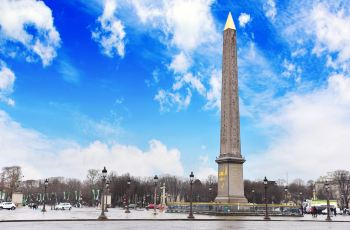
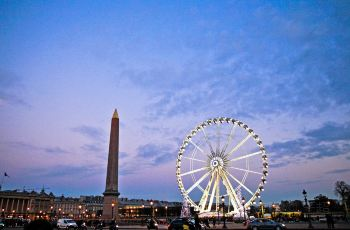
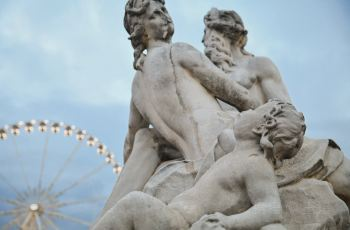
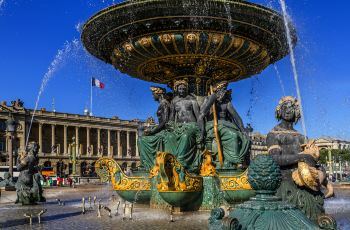
Champs-Élysées
The Champs-Élysées is a renowned avenue in Paris, recognized as the heart of French fashion and a hub for international luxury brands. Stretching from the Place de la Concorde to the Arc de Triomphe at Place Charles de Gaulle, it covers a distance of about 1.8 kilometers. The Rond-Point des Champs-Élysées divides the avenue into two parts: the eastern section is primarily known for its natural beauty, with flat lawns flanking both sides of the street, providing a tranquil and peaceful setting. The western section is a commercial area, featuring many high-end boutiques that give off an air of grandeur and elegance.
East of the Rond-Point, the avenue transforms into a tree-lined boulevard, offering a more serene and idyllic setting away from the hustle and bustle. Strolling along the avenue, shaded by dense plane trees, one can experience the lifestyle and romance of Parisians. The 19th-century buildings, vintage-style street lamps, and Art Nouveau kiosks all add to the unique romantic charm of this iconic avenue.
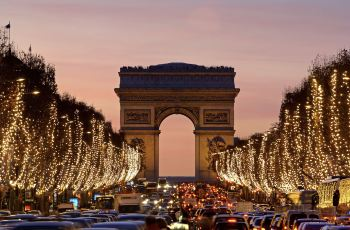
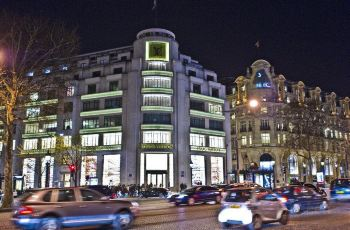
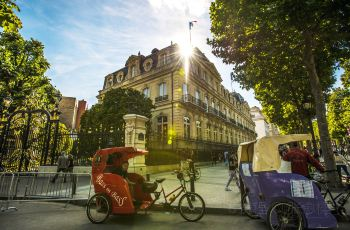

Eiffel Tower
The Eiffel Tower, one of the iconic landmarks of Paris, is an iron lattice tower located on the Champ de Mars in Paris. It is the tallest structure in the city and a cultural symbol of France. Initially constructed for the World’s Fair and to commemorate the 100th anniversary of the French Revolution, the tower is named after its designer, the renowned French structural engineer Gustave Eiffel. A bust of Eiffel is placed at the base of the northern pillar.
The total height of the Eiffel Tower is 324 meters (including antennas, 24 meters), and apart from the four concrete piers, the entire structure is made of iron. Construction began in 1887, and the tower consists of three levels. These levels are located at 57 meters, 115 meters, and 276 meters above ground level. There are a total of 1,711 steps from the base to the top of the tower, which is incredibly impressive.
Each of the three observation decks, despite being at different heights, offers distinct views, each with its own charm. Every year, millions of people ascend to the top to enjoy panoramic views of Paris.
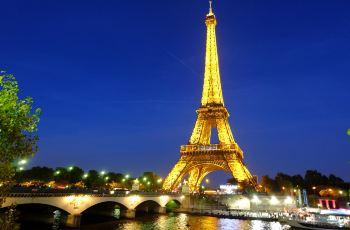

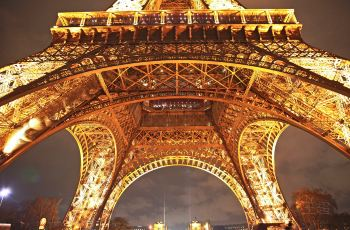
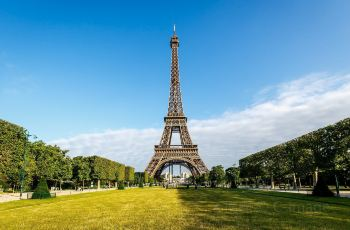
Attraction: Notre-Dame Cathedral
Notre-Dame Cathedral stands on Île de la Cité in the Seine River, located at the heart of Paris. It was constructed between approximately 1163 and 1250 and has witnessed the historical changes of Paris. This Gothic-style Christian church gained worldwide fame through the poetic depiction by the renowned French author Victor Hugo in his novel “The Hunchback of Notre-Dame.” Address: Cathédrale Notre-Dame de Paris
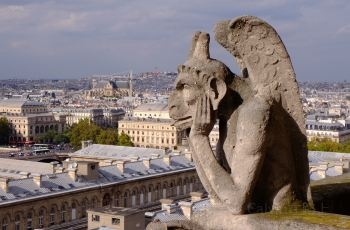
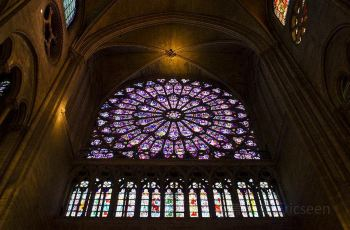
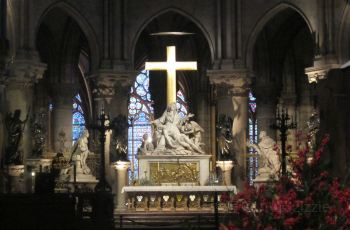
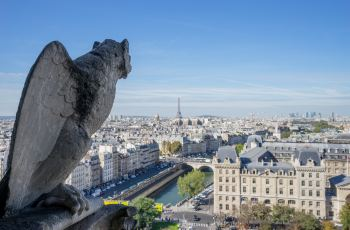
Transportation:
- Flight: MU553 departs at 00:15 and arrives at 06:30 (flight duration is approximately 12.5 hours).
- Ground Transportation: After arrival, you will be transported by an air-conditioned tour bus.
Meals:
- Breakfast: Provided as airplane meal service during the flight.
- Lunch: Served on a cruise along the Seine River in Paris.
- Dinner: A group dinner will be provided.
Accommodation:
- Hotel: You will be staying in a hotel located in Paris
Day 2: Paris
Itinerary:
- Breakfast: After breakfast, start your wonderful sightseeing tour.
- Sightseeing:
- Louvre Museum (including entrance fee, guided tour duration is not less than 1 hour with Chinese-speaking guide): The treasure house of French art. Following the guided tour, enjoy 1 hour of free time within the Louvre Museum.
- Free Time:
- After visiting the Louvre, enjoy free time in the city center near the Galeries Lafayette and the Samaritaine department stores for no less than 4 hours.
Attraction: The Louvre
The Louvre was originally built in 1204. This castle has undergone numerous expansions and was transformed into a museum following the French Revolution. It is considered one of the world’s top three museums alongside the British Museum in London and the Metropolitan Museum of Art in New York. The Louvre now houses more than 400,000 pieces of art, with exhibits spanning over 1,500 years. Ancient treasures from civilizations such as Greece, Rome, and Egypt are presented here, making it a mystical treasury of wonders. Films like “The Phantom of the Louvre” and “The Da Vinci Code” have been filmed on location at the museum. Only about 10% of the collection is typically on display, yet this limited selection is enough to satisfy the eye.
The Louvre is famous for its “Three Treasures”:
- Mona Lisa by Leonardo da Vinci – This world-renowned painting presents the entire upper body of the subject within the frame, with arms and hands depicted in a natural and complete manner. The enigmatic smile stands out against a backdrop that blurs the lines between reality and fiction.
- Winged Victory of Samothrace – This groundbreaking statue depicts the winged goddess Nike standing upright on the prow of a ship, set upon the sacred ground of the island of Samothrace. The folds of her garment are rendered in exquisite detail, demonstrating masterful craftsmanship.
- Venus de Milo – This armless statue of the goddess Venus captivates with her noble elegance, graceful facial features, and serene expression, along with the mysterious story surrounding her origins.
However, the museum offers much more than just these three iconic treasures. You can also admire other classic works that may not be as well-known but are equally enchanting.
The Louvre is not only rich in its exhibits but is itself an outstanding work of art. The hundreds of spacious halls used to display the treasures are sumptuously decorated, with intricate murals and detailed bas-reliefs adorning the walls and ceilings. At the heart of this vast architectural complex stands a giant glass pyramid designed by Chinese-American architect I.M. Pei, seamlessly blending classical architecture with modern design. Whether bathed in sunlight or illuminated by night, it is a sight of extraordinary beauty.
Address: Musée du Louvre
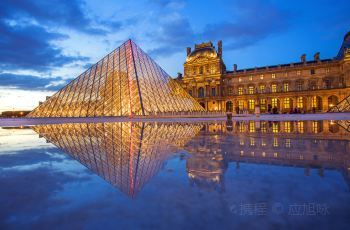
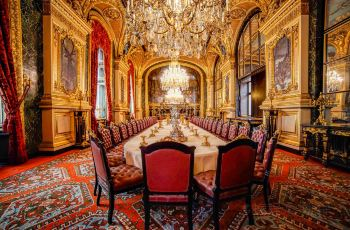
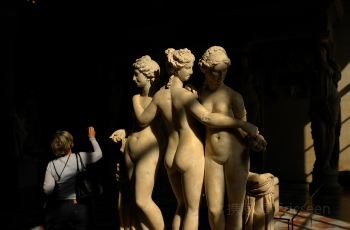
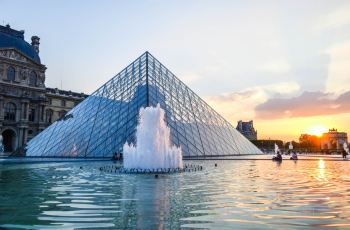
Transportation: Air-conditioned tour bus.
Meals:
- Breakfast: Hotel breakfast.
- Lunch: Group meal.
- Dinner: Group meal.
Accommodation: Paris.
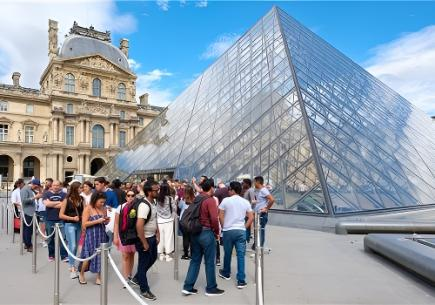
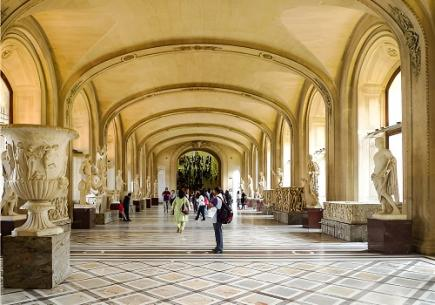
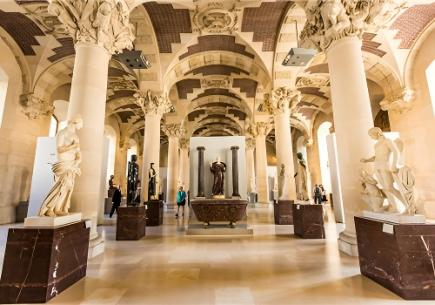
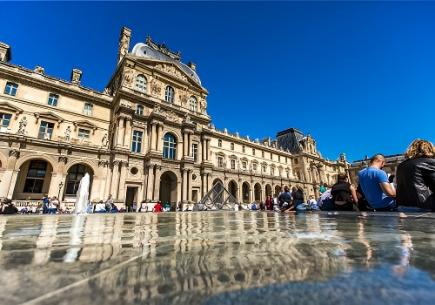
Day 3: Paris – Dijon (Approximately 320 kilometers)
Itinerary:
- Breakfast: After breakfast, head to visit the Versailles Palace (a UNESCO World Heritage Site) (including entrance fee, guided tour duration is not less than 1.5 hours with Chinese-speaking guide).
- Visit: Following the visit to Versailles Palace, travel to the Burgundy region and the town of Beaune (Bonne). A special wine tasting session is arranged at a local winery (tour duration is approximately 1 hour). The local wines are characterized by light tannins, light body, and strong fruity flavors, making them refreshing, soft, and well-balanced, providing a comfortable and approachable drinking experience.
Transportation:
- Air-conditioned Tour Bus: Travel in comfort throughout the day.
Meals:
- Breakfast: Hotel breakfast.
- Lunch: Group meal.
- Dinner: Group meal.
Accommodation:
- Near Dijon: Stay overnight in a hotel near Dijon.
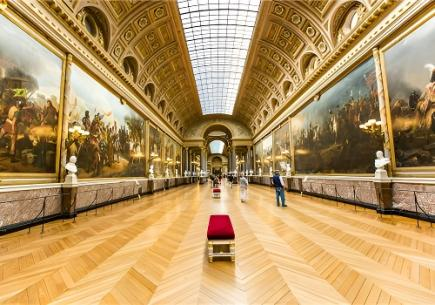

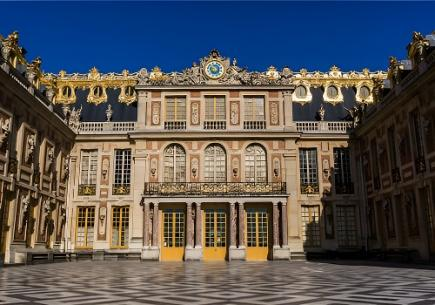
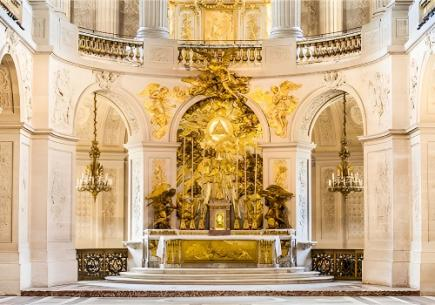
Day 4: Dijon – Besançon (Approximately 100 kilometers) – Eguisheim (Approximately 160 kilometers) – Mulhouse (Approximately 40 kilometers)
Itinerary:
- Breakfast: After breakfast, head to Besançon, the birthplace of the great writer Victor Hugo (tour duration is not less than 1 hour). Besançon is situated on the Doubs River, surrounded by mountains, with water on three sides, offering beautiful scenery and a pleasant climate. Walking through the streets of Besançon feels like traveling through history, with historical sites at every turn.
- Visit: Continue to the flower-filled town of Eguisheim (tour duration is not less than 1 hour). This charming town was named one of France’s “Most Beautiful Villages” in 2013 and is one of the four renowned flower towns in France. The public areas of the town are already adorned with colorful flowers, and the residents decorate their homes with flowers according to their own preferences, making the entire town a feast for the eyes.
Transportation:
- Air-conditioned Tour Bus: Comfortable transportation throughout the day.
Meals:
- Breakfast: Hotel breakfast.
- Lunch: Group meal.
- Dinner: Group meal.
Accommodation:
- Near Mulhouse: Overnight stay in a hotel near Mulhouse
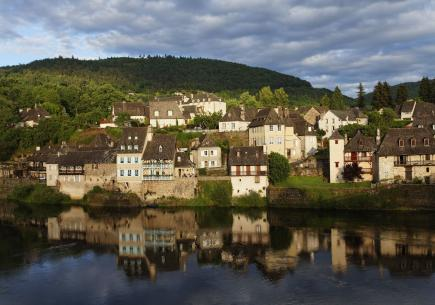
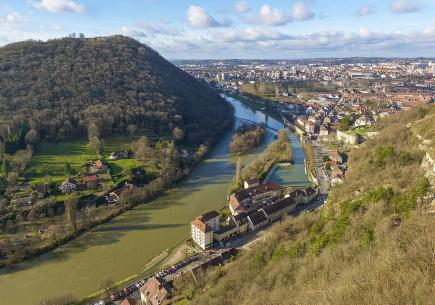
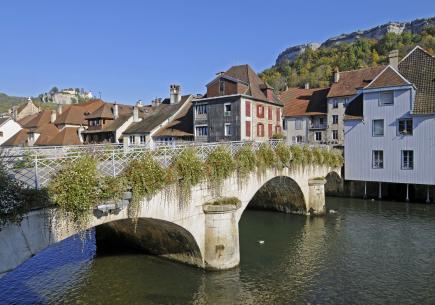
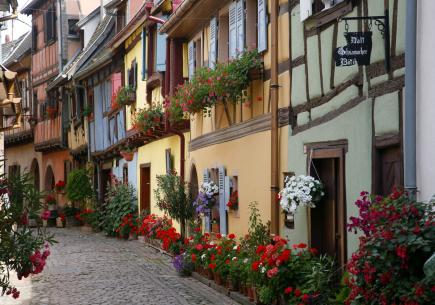
Day 5: Mulhouse – Lucerne (Approximately 130 kilometers)
Itinerary:
- Breakfast: After breakfast, head to Lucerne, known as the “honeymoon capital” (tour duration is not less than 45 minutes). Visit attractions including the Chapel Bridge, the Lion Monument, and the Lake of the Four Forest Cantons (also known as Lake Lucerne).
- Free Time: Enjoy free time in Lucerne for 2 hours.
Sights:
- Chapel Bridge and Octagonal Water Tower:
- Built in 1332, the Chapel Bridge spans the banks of Lucerne and is one of Europe’s oldest wooden covered bridges. It was rebuilt after a fire in 1993 and leads to the iconic landmark of Lucerne – the octagonal water tower. Along with the Musegg Wall, the bridge and water tower were part of Lucerne’s defensive fortifications.
- The Chapel Bridge and the octagonal water tower are emblematic structures of Lucerne and Switzerland, often featured on postcards. During the day, the bridge is decorated with vibrant flowers; at dusk, it is perfect for a romantic stroll through the medieval atmosphere; and at night, the bridge and water tower are illuminated romantically by colored lights. For this reason, they are also referred to as the “flower bridge and water tower.”
- The bridge has paintings on its roof beams depicting the life of the patron saint of Lucerne and the city’s historical development. The octagonal water tower, located near the center of the bridge, was the only structure that survived the fire. It served as a lookout for invaders and as a storeroom for trophies and an interrogation room.
Address:
- Chapel Bridge and Octagonal Water Tower: Kapellbrücke, 6002 Lucerne
Meals:
- Breakfast: Hotel breakfast.
- Lunch: Group meal.
- Dinner: Group meal.
Accommodation:
- Near Mulhouse: Overnight stay in a hotel near Mulhouse.
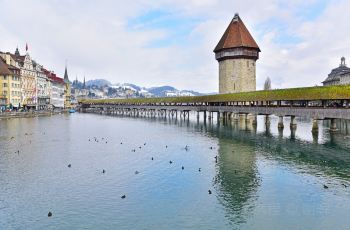
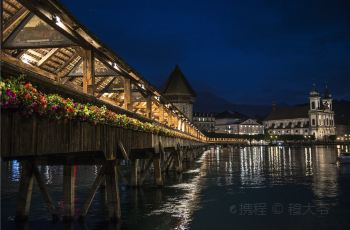
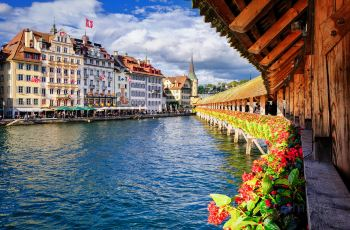
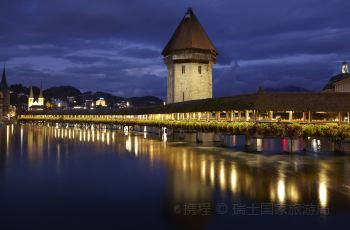
Sights:
- Lion Monument:
- Design and Significance:
- The Lion Monument was designed by Danish sculptor Bertel Thorvaldsen and carved into natural rock to commemorate 786 loyal Swiss Guards who died protecting the royal family of King Louis XVI of France during the events of August 10, 1792.
- The Dying Lion Image:
- The monument features a large, dying lion carved into a shallow recess. The lion is depicted with a sorrowful and pained expression, lying weakly on the ground, with a sharp arrow deeply embedded in its back. Its forepaws rest on a broken halberd and shield, which bear the Swiss cross and the fleur-de-lis symbol of the French monarchy.
- The World’s Most Melancholy Sculpture:
- Above the sculpture is inscribed the Latin text “To the Loyalty and Bravery of the Swiss.” Below, the first line marks the dates of the tragedy: August 10 and September 2–3, 1792. The monument is highly evocative and has been described by American author Mark Twain as “the most mournful and moving piece of stone in the world.”
- Surrounding Scenery:
- In front of the Lion Monument is a clear lake where mandarin ducks and wild ducks often play, making for a pleasant scene. During the summer, concerts are frequently held here, which can be enjoyed for free. After taking photos with the monument, visitors can browse souvenir shops nearby and then proceed to the adjacent Glacier Park for further exploration.
- Design and Significance:
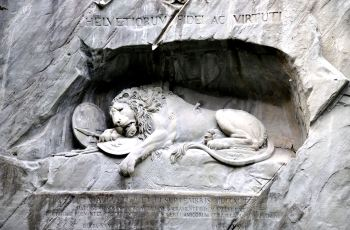
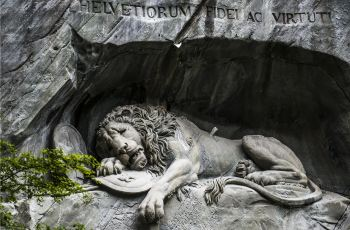
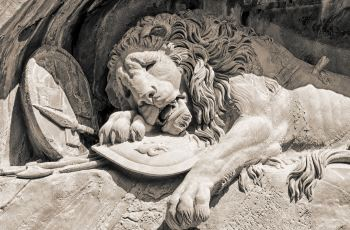
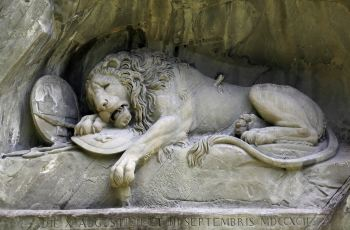
Sights:
- Lake Lucerne (Vierwaldstättersee):
- Location and Name:
- Lake Lucerne is located in central Switzerland. Its German name, Vierwaldstättersee, means “Four Forested States’ Lake,” and it is considered the birthplace of the Swiss Confederation.
- Scenic Beauty:
- The lake’s winding shoreline connects the city of Lucerne with surrounding mountain peaks, creating numerous picturesque vistas. Lucerne itself is situated on the shores of Lake Lucerne, attracting visitors from around the world each summer to enjoy water activities and the cool climate.
- Charming Lake Views and Surroundings:
- The crystal-clear waters of Lake Lucerne reflect idyllic landscapes. From the dock, one can see pointed spires of churches, uniquely shaped houses, trees trimmed like mushroom clouds, and the red and white Swiss flags fluttering above buildings, all painting a colorful picture. Swans and other waterfowl often grace the lake, their reflections merging with the distant snow-capped mountains and the beauty of the city.
- Elegant Buildings Along the Shore:
- Many beautiful structures line the shores of Lake Lucerne. These are typical European classical-style buildings, usually no more than five or six stories high, painted in colors such as white, light yellow, blue, pink, and brown, with mostly bright red roofs.
- Kapellbrücke (Chapel Bridge) and Water Tower:
- A short distance away along the lakeshore is a prominent 200-meter-long wooden bridge that spans diagonally across the lake. This is the Kapellbrücke, Europe’s oldest covered wooden bridge. Midway along the bridge is an octagonal water tower, one of Lucerne’s most distinctive landmarks. Flowers, such as geraniums, adorn the exterior of the bridge, giving it a vibrant appearance. Often referred to as the “Flower Bridge and Water Tower,” it is a popular spot for couples to take photos. The vertical water tower and the horizontal wooden bridge complement each other, creating a unique rhythm on Lake Lucerne. It is a tranquil and peaceful place without the hustle and bustle of crowds.
- Address:
- Lake Lucerne, Lucerne
- Location and Name:
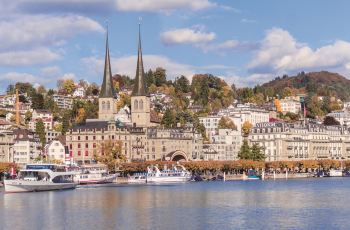
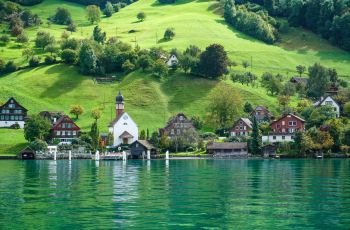
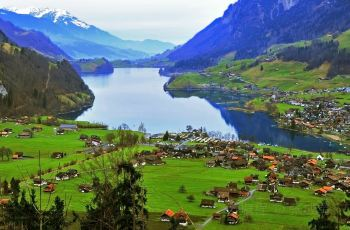
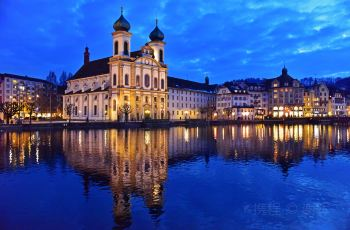
Transportation:
- Air-conditioned Tour Bus: Travel will be by air-conditioned tour bus.
Meals:
- Breakfast: Breakfast will be served at the hotel.
- Lunch and Dinner: Both lunch and dinner will be group meals.
Accommodation:
- Near Lucerne: Accommodation will be in a hotel near Lucerne.
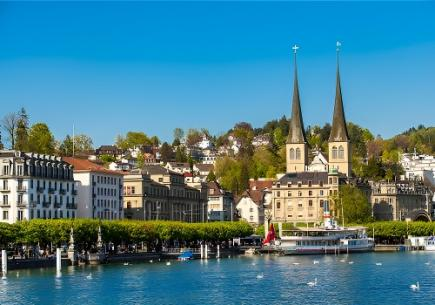
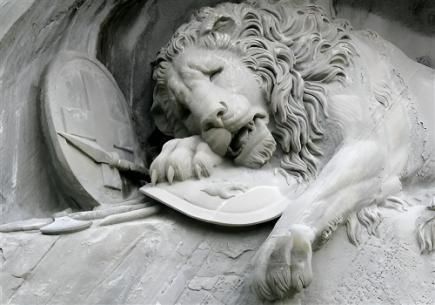
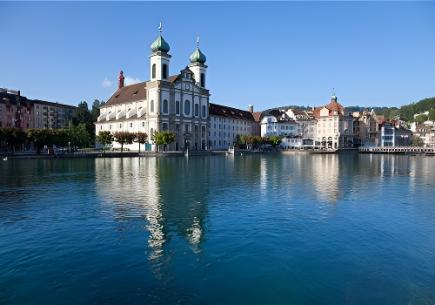
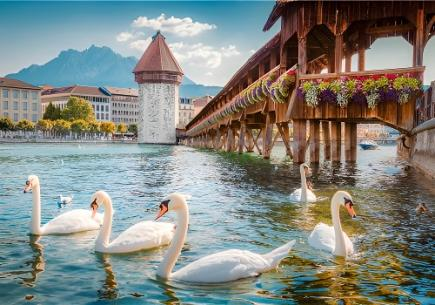
Day 6: Lucerne – Engelberg (Approximately 40 kilometers) – Vaduz, Liechtenstein (Approximately 220 kilometers) – Füssen (Approximately 160 kilometers)
Itinerary:
- Breakfast: After breakfast, drive to Mount Titlis (including cable car ticket, tour duration is not less than 1.5 hours) (Special Note: If Mount Titlis is under maintenance, the visit will be replaced with Mount Pilatus or Mount Rigi).
- Visit: Proceed to Vaduz, the capital of the mini-principality of Liechtenstein on the Swiss-Austrian border (city tour duration is 1 hour). This tiny country is renowned among philatelists worldwide for its stamps. Stroll down the streets of Vaduz, and the simple charm of the locals will make a lasting impression. This miniature postal kingdom will surely leave you with countless fond memories.
Sights:
- Mount Titlis:
- Mount Titlis is located in the famous ski and spa resort of Engelberg, south of Lucerne, approximately 33 kilometers away. With an elevation of 3,238 meters, it is the highest peak in central Switzerland and one of the few glaciers in the region that can be reached within an hour. To truly appreciate the beauty of the Alps, one must stand atop the mountain!
- Address:
- Poststrasse 3, 6391 Engelberg
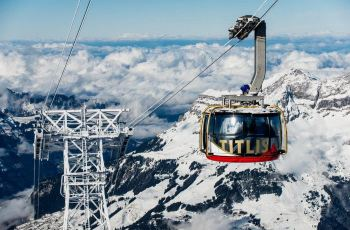
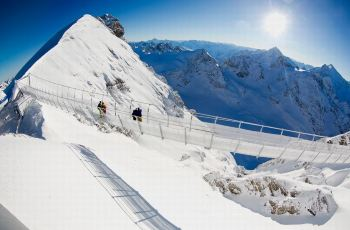
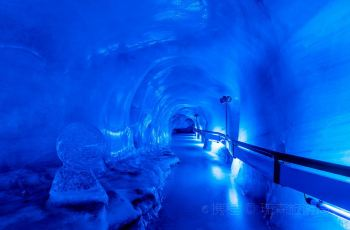
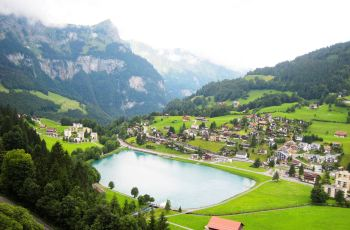
Transportation:
- Air-conditioned Tour Bus: Travel in comfort by air-conditioned tour bus.
Meals:
- Breakfast: Hotel breakfast.
- Lunch and Dinner: Group meals.
Accommodation:
- Near Füssen: Overnight stay in a hotel near Füssen.

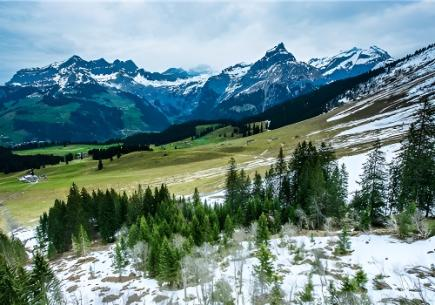
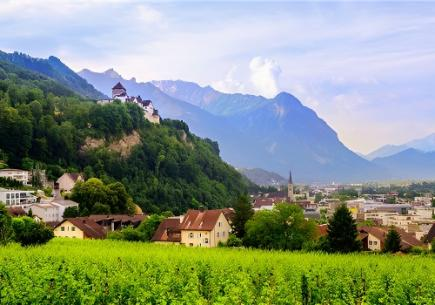
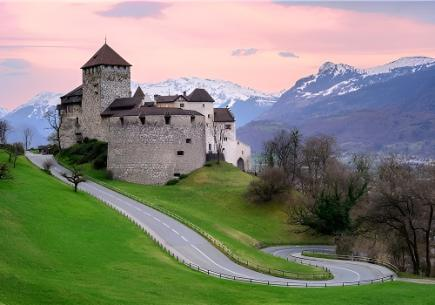
Day 7: Füssen – Innsbruck (approximately 110 km) – Verona (approximately 275 km)
Itinerary:
- After breakfast, head to Neuschwanstein Castle (admission included, visit duration no less than 1 hour. Due to daily visitor limits at Neuschwanstein Castle, if entry is not possible, an exterior visit will be arranged instead and a refund of 140 yuan per person will be given for the ticket).
- Neuschwanstein Castle, also known as the Cinderella Castle, is a fairy-tale-like location steeped in ancient legends of magic, kings, and knights. It was built by King Ludwig II of Bavaria, who personally participated in its design.
- Proceed to Innsbruck for sightseeing, including an exterior visit to the Golden Roof and a stroll through the Old Town!
Attractions:
- Golden Roof (Goldenes Dachl)
- The Golden Roof is a landmark in Innsbruck, Austria, constructed by Holy Roman Emperor Maximilian I in 1500. It is adorned with 2,657 gilded copper tiles. The balcony features reliefs depicting coats of arms and other figures from his life. The Golden Roof was once referred to as the “New Royal Palace.” Duke Friedrich “the Empty Pockets” moved his residence to Innsbruck in 1420 and ordered the construction of his palace here. Between 1494 and 1496, during Maximilian I’s marriage, he commissioned Niklas to transform the old overhanging tower into a Gothic bay window for viewing tournaments and theatrical performances. The roof eaves are decorated with animal carvings, and the columns are covered with reliefs, including statues of Emperor Maximilian I and his queen. The lower part of the facade features the coats of arms of Austria and Hungary: the double-headed eagle and the royal eagle, as well as the coats of arms of Burgundy and Milan. There are also the coats of arms of Styria and Tyrol on the sides.
Address:
- Museum Goldenes Dachl
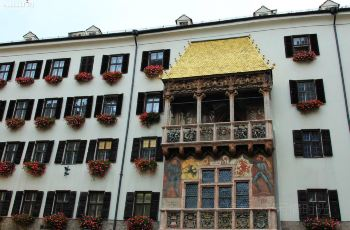
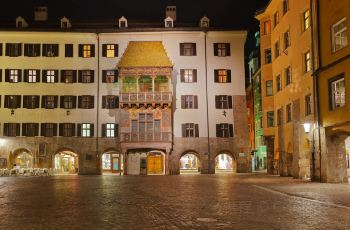
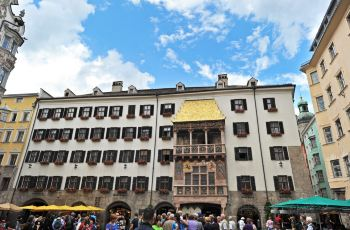

Attraction:
- Old Town of Innsbruck
The Old Town of Innsbruck is not very large, but the buildings lining its streets are colorful, ancient yet vibrant. The streets are well-maintained, some wide, others narrow, with many winding paths. There has been little urban planning, yet the entire Old Town is a scenic area, a perfect blend of human culture and nature. With a rich historical background and situated close to the Inn River, the natural scenery is breathtakingly beautiful. The main street is Maria Theresien Street, where you can find iconic landmarks of Innsbruck such as the Anna Column, the Golden Roof, and the Triumphal Arch. Along the streets, there are numerous historic cafes and restaurants where you can enjoy a cup of coffee and savor the atmosphere.
Address:
- Innsbruck, Austria
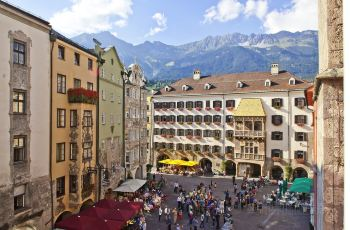
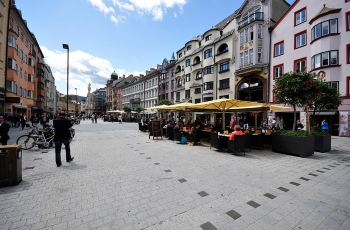
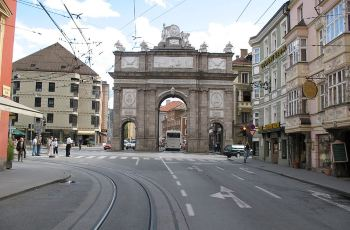
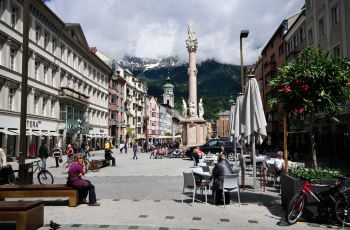
Transportation:
- Air-conditioned Tour Bus: Travel in comfort by air-conditioned tour bus.
Meals:
- Breakfast: Hotel breakfast.
- Lunch and Dinner: Group meals.
Accommodation:
- Near Verona: Overnight stay in a hotel near Verona
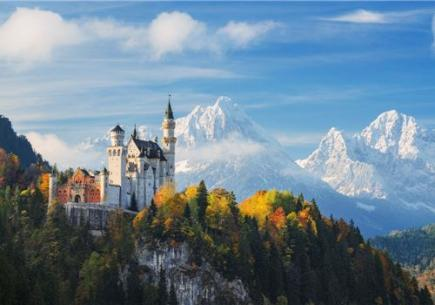
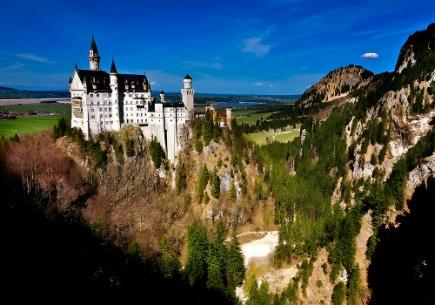
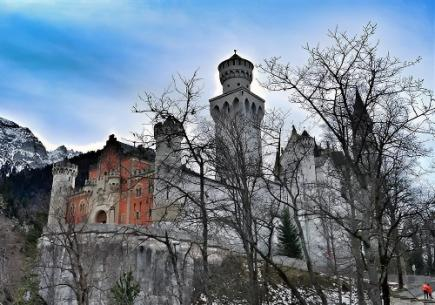
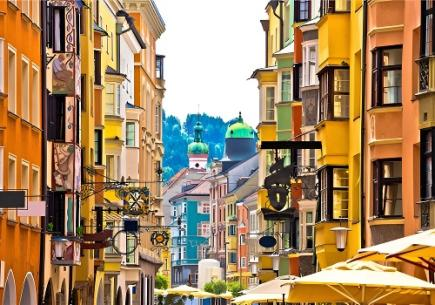
Day 8: Verona – Venice (Approximately 120 kilometers)
Itinerary:
After breakfast, visit Verona, the Italian town made famous worldwide by Shakespeare’s masterpiece Romeo and Juliet (visit duration: 1 hour) (UNESCO World Heritage Site), including the [House of Juliet].
Later, proceed to [Noventa di Piave Designer Outlet] (free time: 2 hours). This outlet village is part of the McArthurGlen chain and is designed like a small town, with inspiration drawn from Venetian palaces. It features luxurious central displays and walls adorned with mosaics and frescoes. This is one of Italy’s largest designer outlets, featuring many top-tier brands.
Attractions:
- House of Juliet
Located in northern Italy, Verona is the hometown of Romeo and Juliet as depicted by Shakespeare. The House of Juliet is situated near Piazza delle Erbe in the city center and was once owned by the noble Capulet family. The house is a 13th-century building with high walls and a courtyard with a round arch entrance. Entry to the courtyard is free, but there is an admission fee to visit the second floor. Upon entering the gate, you will find yourself in an old-fashioned courtyard surrounded on three sides by walls and buildings, with a cobblestone ground and earthy yellow-brown walls covered with lush vines. Facing the entrance, there is a bronze statue of Juliet. To the right of the courtyard, you can see the famous “Juliet’s Balcony” by looking up. The balcony is not large and has simple carvings, with two small windows visible on either side. It is here that Romeo and Juliet had their secret rendezvous and exchanged vows of love, and it is said that Romeo climbed up this balcony to consummate his love with Juliet. For those interested, there is an additional charge to take photos on the balcony. Additionally, within the courtyard is a famous “Love Wall,” located directly below the balcony, covered with names written and pasted together in various languages, enclosed in hearts and pierced with Cupid’s arrows, decorated with different colors and patterns. According to legend, writing the names of two lovers together on this wall ensures eternal love.
Address:
- Casa di Giulietta
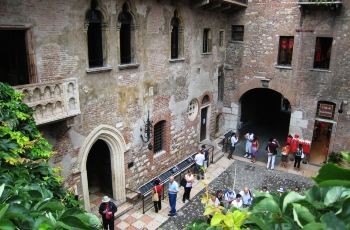
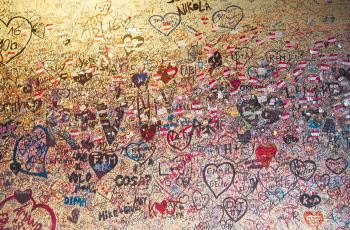
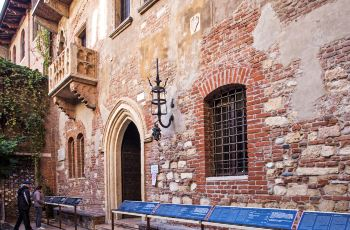
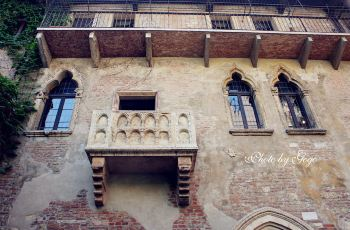
Transportation: Air-conditioned tour bus
Meals:
- Breakfast: Hotel breakfast
- Lunch: Group meal
- Dinner: Group meal
Accommodation: Near Venice
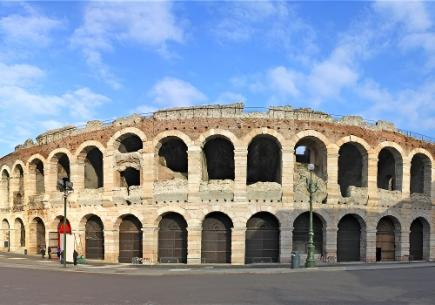
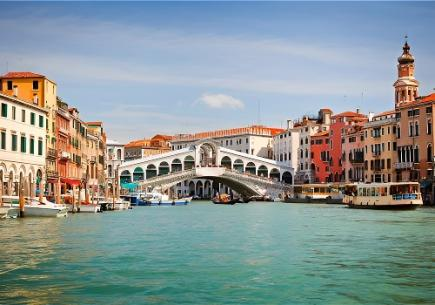
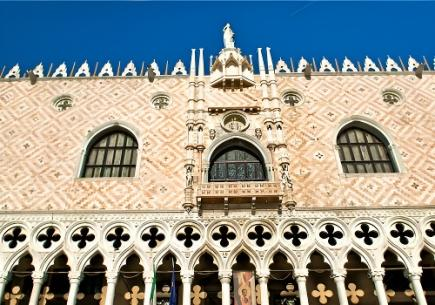
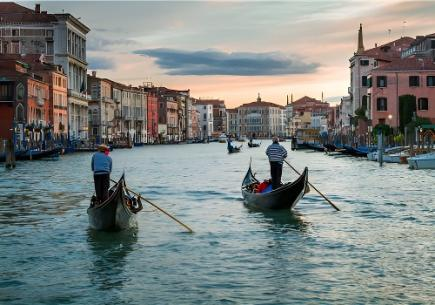
Day 9: Venice – Florence (Approximately 255 kilometers)
Itinerary:
After breakfast, take a boat to the main island of Venice (UNESCO World Heritage Site) to visit the [St. Mark’s Square], [St. Mark’s Basilica], and [Bridge of Sighs] from the outside. Take a ride on a [Venetian Gondola] (including boat ticket), and then enjoy 1 hour of free time at the T Fondaco dei Tedeschi by DFS on the main island of Venice.
- T Fondaco dei Tedeschi by DFS is located in the Fondaco dei Tedeschi palace, which was formerly a German trading hall and is the second most important historical building in Venice after the Doge’s Palace.
Attractions:
- St. Mark’s Square
St. Mark’s Square is a landmark of Venice, beloved by tourists, photographers, and even pigeons. Napoleon once praised it as “the most beautiful drawing room of Europe.” Historically, St. Mark’s Square has always been the political, religious, and festival center of Venice, housing all the major government institutions. Since the 19th century, it has been the residence of the archbishop and the venue for many Venetian festivals.
- Layout and Style: Over 200 years have passed, yet the charm of this trapezoidal square on the Grand Canal remains unchanged. The square is about 170 meters long, 80 meters wide on the east side, and 55 meters wide on the west side. From New Year’s Day to Carnival and Christmas, Venetians hold large and small festivals on St. Mark’s Square. Even on ordinary days, people from all directions flock to this square. The square is surrounded by exquisite Renaissance-style buildings. St. Mark’s Basilica, the Mint, and the Doge’s Palace are located on the east side of the square, while the Bell Tower and the new and old Parliament buildings are on the south side. The square is bustling with people during the day, and flocks of pigeons fly around.
Address:
- Piazza San Marco
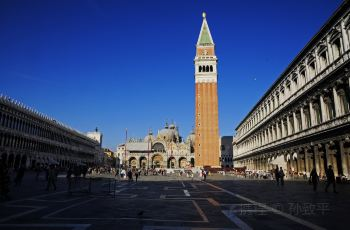
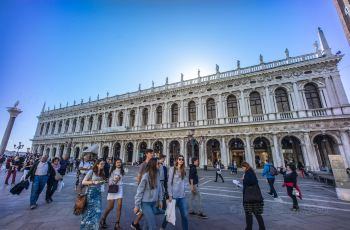
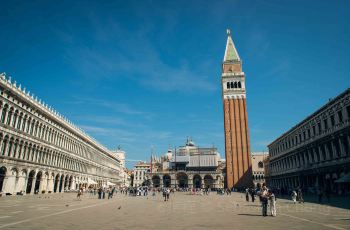
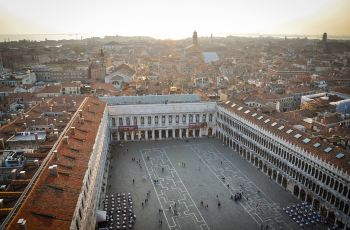
Attraction:
- St. Mark’s Basilica
Located on St. Mark’s Square, adjacent to the Doge’s Palace, St. Mark’s Basilica was originally constructed in 828 and rebuilt in the 11th century following a fire. Initially built to house the relics of Saint Mark, it later became a repository for treasures plundered during the Crusades. It was once one of the largest churches in medieval Europe and is a treasure trove of rich artworks.
- Architectural Style: The basilica is primarily Byzantine in style, blending elements from Romanesque to Renaissance architecture and decoration. The front features five Romanesque horseshoe-shaped arches, topped with Oriental and Gothic spires, various marble sculptures, reliefs, and floral patterns. The most prominent features are its large domes and stunning mosaics.
- Structure: The basilica consists of five large domed naves and two ambulatory halls, forming a giant Greek cross. The five domes are modeled after those of Istanbul’s Hagia Sophia and are renowned examples of Byzantine architecture. Three flagpoles stand before the basilica, symbolizing the islands of Cyprus, Crete, and Morea, which were under Venetian control during its heyday, serving as a testament to the city’s glorious history.
- Statues and Symbols: At the top of the basilica’s central part is a statue of Saint Mark holding the Gospel of Mark, with a flying lion symbolizing him below. Replicas of four bronze horses stand atop the arches; the originals are housed on the second floor in the Museo di San Marco. These horses date back to the 4th century BC and were taken from Constantinople by the Venetians in 1204. They were briefly removed by Napoleon to Paris but eventually returned to Venice.
- Mosaic Panels: The five mosaic panels above the arches capture attention, arranged from right to left as follows: upper right – The Transport of Saint Mark’s Relics from Constantinople, upper left – The Arrival of the Relics in Venice, center – The Last Judgment, lower left – The Praise of Saint Mark, and lower right – The Transport of Saint Mark into the Basilica. The Last Judgment panel is based on a biblical story.
Address:
- Basilica di San Marco
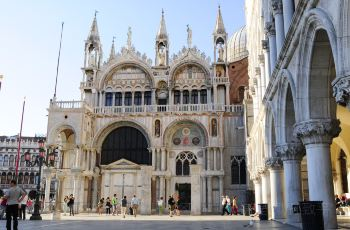
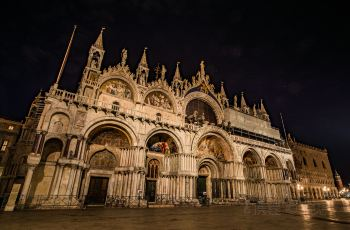
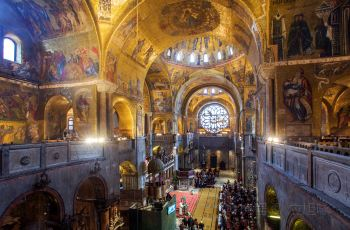
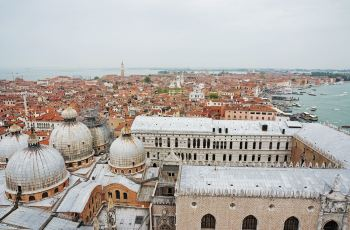
Attraction:
- Bridge of Sighs
The Bridge of Sighs is a Baroque-style stone bridge located next to the Doge’s Palace, and it is one of the famous bridges in Venice. This is a covered arched bridge, where the view from inside out can only be seen through small windows on the bridge. The bridge connects the court and the prison, and condemned prisoners would pass over this bridge, sighing at their final glimpse of the world before their execution, hence the name “Bridge of Sighs.” Nowadays, the Bridge of Sighs has shed its gloomy and ominous reputation due to the film “A Little Romance,” and it is also known as the “Sunset Bridge.” In the film, it is the bridge where the fugitive protagonists pledge their love to each other at sunset.
Visiting Methods:
- Viewing and Photographing: There are generally three ways to visit the Bridge of Sighs. The most common way is to admire it from a distance while standing on the Riva degli Schiavoni (Slavs’ Quay), where tourists usually take photos with the bridge. Sometimes, large posters advertising internationally renowned watches and cosmetics can be seen hanging on the bridge, adding to the scenic beauty of the bridge.
Address:
- Ponte dei Sospiri
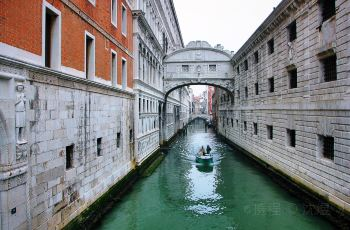
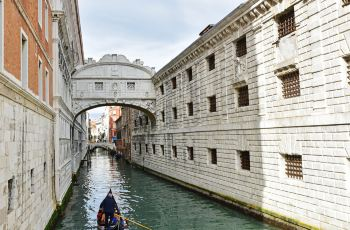
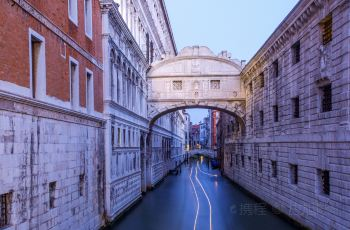
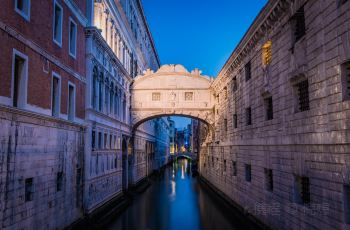
Attraction:
- Gondola Ride
“Venice is a very unique city, where water meets the doorstep, and rivers serve as streets. Apart from buildings and squares, there is almost no land visible in the city. Venice has no roads, no cars, and no traffic lights, only winding waterways and boats coming and going, along with more than 400 bridges of diverse styles. Boats are essential modes of transportation for the Venetians. Among the various types of boats, the most distinctive is a small rowboat called the ‘gondola,’ which typically carries up to six passengers, plus one gondolier. Since the 11th century, the gondola has become an integral part of Venice. Its slender hull and flat bottom are particularly suitable for the narrow and shallow canals of Venice. The bow of the gondola is slightly tilted to the left to counterbalance the weight of the oar, preventing the gondola from circling in place. According to a law established in 1562, all gondolas must be painted black to prevent people from flaunting their wealth. Only during special occasions are gondolas decorated as flower boats.”
Address:
- Venezia, VE, Italia
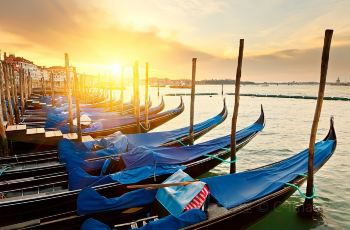
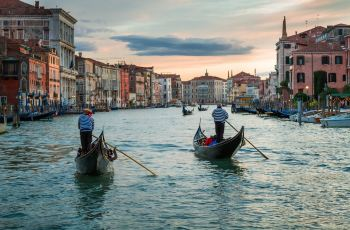
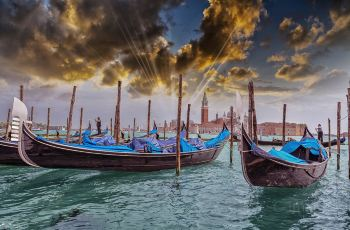
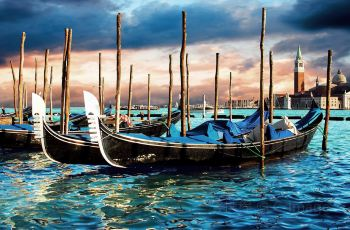
Transportation:
- Air-conditioned Tour Bus: Travel in comfort by air-conditioned tour bus.
Meals:
- Breakfast: Hotel breakfast.
- Lunch and Dinner: Group meals.
Accommodation:
- Near Florence: Overnight stay in a hotel near Florence
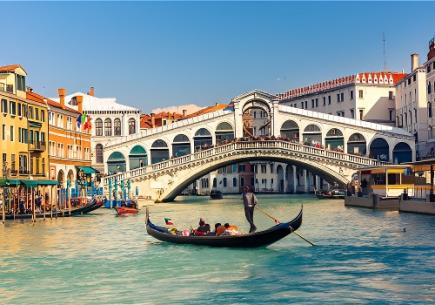
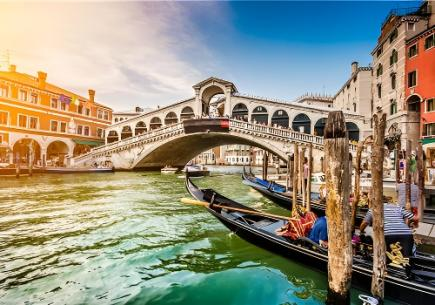
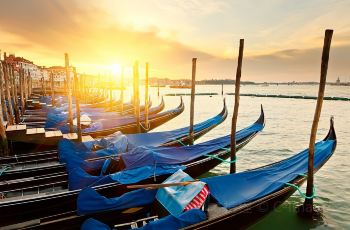
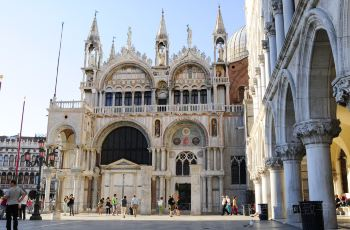
Day 10: Florence – Pisa (approximately 95 km) – Rome (approximately 330 km)
Itinerary:
After breakfast, visit the Renaissance city of Florence (a UNESCO World Heritage site), including sights such as the [Basilica of Santa Maria del Fiore] and the [Piazza della Signoria]. Later, drive to the town of Pisa to see the world wonder, the [Leaning Tower of Pisa] (observation only, no access to the tower, minimum 1-hour visit).
Attraction: Basilica of Santa Maria del Fiore
The Basilica of Santa Maria del Fiore is the cathedral church of the Roman Catholic Archdiocese of Florence and also one of the largest churches in the world. It stands as a symbol of Florence and is the tallest building in the city. The cathedral complex consists of the main church, bell tower, and baptistery, which together represent the early Renaissance period. The exterior is adorned with vibrant red, dark green, and white marble arranged in geometric patterns, making it an impressive sight that perfectly embodies the classical, elegant, and free spirit of the Renaissance. No matter from which angle you view it, the cathedral appears solemn and exquisite, hence its name “Basilica of the Flowering Saint.” In 1982, the cathedral was included as part of the Historic Center of Florence on the list of World Heritage Sites.
Baptistery Opposite the cathedral is the Baptistery, a notable octagonal structure famous for its “Gate of Paradise.” Though named the Gate of Paradise, it is actually made of bronze and has remained vivid after more than 600 years. Michelangelo praised it as the “Gates of Paradise.” The gate features ten reliefs depicting stories from the Bible. To protect these relics, the original gate is now kept in the museum inside the cathedral, while a full-scale replica is displayed at the Baptistery.
Cathedral Museum Within the cathedral, there is a museum that exhibits Michelangelo’s Pietà and the authentic “Gate of Paradise” from the Baptistery. Additionally, visitors can descend stairs in the nave to reach the crypt, where remnants of the old church and the remains of the architect Filippo Brunelleschi are preserved. The early Christian mosaic floor is also worth viewing.
St. John’s Square Facing the cathedral is St. John’s Square (Piazza di San Giovanni), typically where tourists gather. On the right side of the cathedral is the Cathedral Square (Piazza del Duomo), which has vendors selling souvenirs and artists painting portraits for visitors. Surrounding the cathedral are numerous art galleries and shopping markets, forming the heart of Florence, which you can explore at your leisure.
Address: Cattedrale di Santa Maria del Fiore
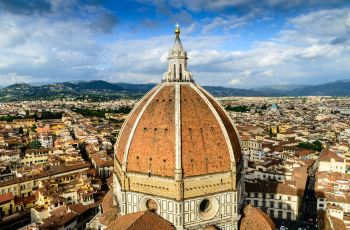


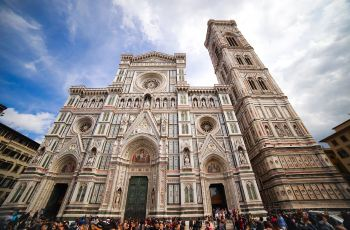
Attraction: Leaning Tower of Pisa
The Leaning Tower of Pisa is an iconic building in Italy and a remarkable architectural marvel, recognized by UNESCO as a World Heritage Site. The tower is actually an independent bell tower of the Cathedral of Pisa, located in the central square of Pisa known as the Field of Miracles (Campo dei Miracoli). The square is always bustling with people, and the most common sight is tourists stretching out their arms, posing in various imaginative ways for photos with the leaning tower.
Construction History and Tilt of the Tower
The Leaning Tower of Pisa stands about 20 meters away from the cathedral. It is cylindrical in shape and constructed from white marble. The foundation stone was laid in 1174 according to the Latin inscription on the base, although it was completed in 1350. However, due to the calendar system used in Pisa being one year ahead of the Gregorian calendar, the construction began in 1173. It is said that the tower was built using spoils from six ships brought back by the Pisan fleet. The tower reaches a height of 54.5 meters, with a diameter of 16 meters, and leans southeastward with a tilt of approximately 3.9 degrees. During the initial stages of construction, the tower was tilting at an average rate of 1 millimeter per year, leading to several periods of interruption in construction. Most believe that the tilt is due to uneven ground and soft soil conditions.
In 1998, cables were wrapped around the third level and attached to a framework, and some of the accumulated soil on the north side was removed to stabilize the tower.
Ascending the Tower to Overlook Pisa
Each level of the tower has arches, totaling 213. The walls on the lower level have reliefs, and the top level has a bell chamber. There are 294 spiral steps within the tower for visitors to climb and enjoy panoramic views of the entire city. Some of the steps are slippery, so visitors should be cautious. During summer evenings, the tower offers a beautiful view of the illuminated city of Pisa. The experience of entering the tower is unique; walking up the very narrow spiral staircase gives the impression of being on a ship. Upon reaching the top, the view opens up. The tower has windows because the interior is hollow, allowing one to see directly down to the bottom through the glass.
Procedure for Climbing the Tower
Nowadays, there are time and capacity restrictions for climbing the tower. Visitors must book tickets in advance at the ticket office or purchase them online to avoid long queues. Ticket holders should assemble at the designated location, where staff will provide a 5-minute introduction to the history of the tower before guiding visitors up the tower. Only 15 people are allowed per group, and the stay at the top cannot exceed 30 minutes.
Surrounding Attractions
If you find the price of the tower too high, you can still wander around the tower area or visit the cathedral and museums in the square. The area near the site has several pedestrian streets lined with shops selling various handicrafts.
Address: Torre pendente di Pisa
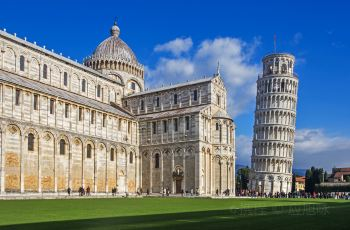

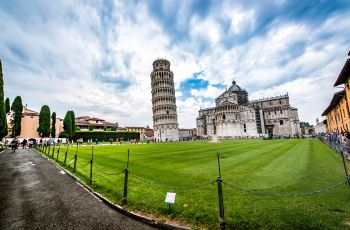
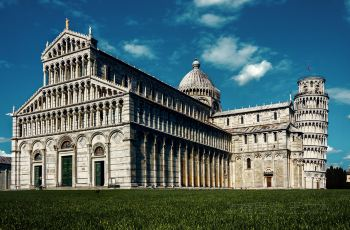
Transportation:
- Air-conditioned Tour Bus: Travel in comfort by air-conditioned tour bus.
Meals:
- Breakfast: Hotel breakfast.
- Lunch: T-bone steak meal.
- Dinner: Group meal.
Accommodation:
- Rome: Overnight stay in a hotel in Rome
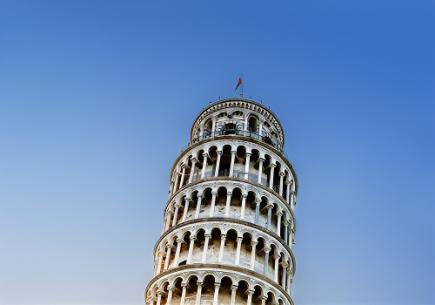
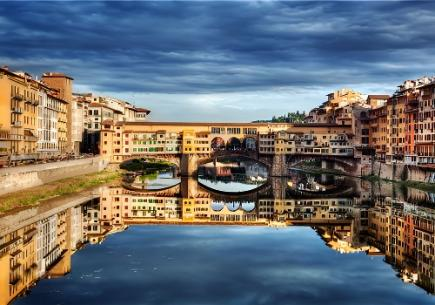
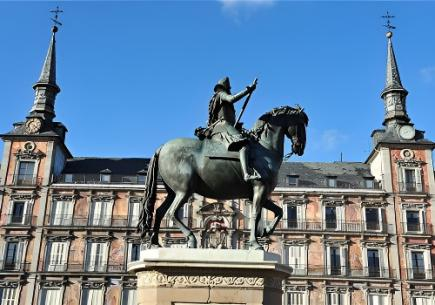
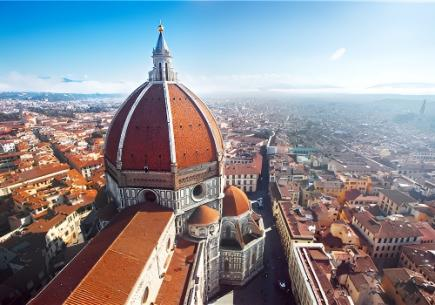
Day 11: Rome – Shanghai (Direct Flight)
Itinerary:
After breakfast, start the last leg of your European journey with a visit to the Eternal City of Rome (a UNESCO World Heritage site), including an exterior visit to the [Colosseum and Arch of Constantine], the [Roman Forum], and the [Trevi Fountain]. Later, enjoy 1.5 hours of free time in the city center of Rome. Then, head to the airport in Rome to check-in and complete departure procedures, including tax refunds, and board a direct flight with China Eastern Airlines back to Shanghai.
Attraction: Colosseum
The Colosseum is located at the lower end of the Roman Forum and is a landmark building in Rome. It was once the arena where gladiators fought for their lives and where prisoners fought against hungry lions, and it stands as a great symbol of eternal Rome.
- History of the Colosseum: The Colosseum was built by Emperor Vespasian on the site of the extravagant Domus Aurea of the tyrant Nero and was completed in 80 AD. However, with the decline of the Roman Empire in the 6th century AD, the Colosseum gradually fell into disuse and became overgrown with weeds. Over the years, it suffered damage from earthquakes and was even used as a quarry for stone and marble by builders. Today, the Colosseum stands as a partially ruined structure, but it still allows visitors to glimpse its former glory.
Address: Colosseo
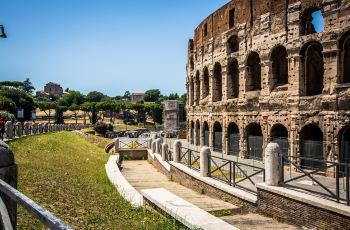

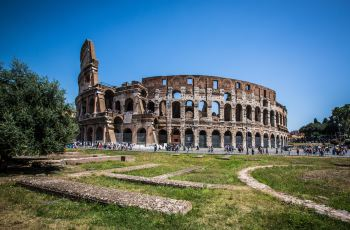
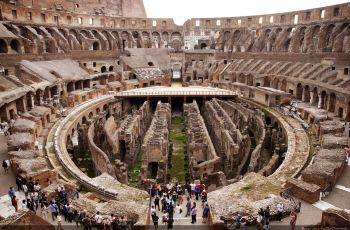
Attraction: Arch of Constantine
The Arch of Constantine was constructed in 315 AD to commemorate Emperor Constantine’s victory over Emperor Maxentius and his unification of the Roman Empire. In ancient Roman times, there were 21 triumphal arches in total; today, only three remain in Rome, one of which is the Arch of Constantine, while the other two are located in the Roman Forum.
- Overview of the Arch: The Arch of Constantine, situated west of the Colosseum, measures 25.7 meters in length, 7.4 meters in width, and 21 meters in height. It has three archways, and the sculptures adorning it are exquisite and grand. Despite the passage of centuries, the arch shows signs of wear and tear but continues to stand alongside the Colosseum, testifying to Rome’s past glory. Today, the Arch of Constantine is a must-see attraction for tourists visiting Rome.
- Reliefs on the Arch: The eight reliefs on top of the arch were removed from the monument of Emperor Aurelian and are now preserved in the Capitoline Museums. These reliefs depict the achievements of various emperors, such as Antoninus Pius and Hadrian. The marble statues of Dacian prisoners atop each column likely originated from Trajan’s Forum. Only the round reliefs above the smaller arches depict scenes from the war.
- Past and Present: When Napoleon visited Rome and saw this arch, he was greatly impressed and later used it as a model for the construction of the Arc de Triomphe in Paris. Although the Arch of Constantine is the latest of the three surviving Roman triumphal arches, it still bears the influence of early Roman art and is relatively well-preserved, making it worth a visit. Today, the Arch of Constantine is surrounded by iron railings, so visitors can only take photos from the outside. A good spot to photograph both the Arch and the Colosseum together is from the open area to the left front of the Arch.
Address: Via di San Gregorio, 00186 Roma RM
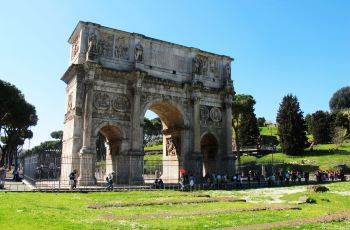
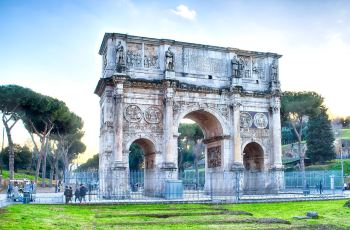
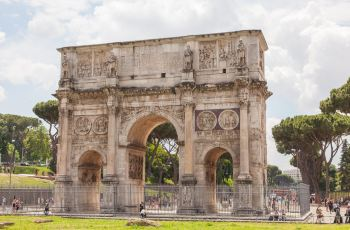
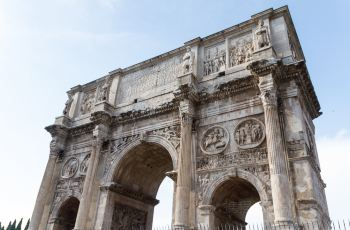
Attraction: Trevi Fountain
Also known as the Maiden Fountain, the Trevi Fountain is more commonly referred to as the Wishing Well. This fountain is one of the most beautiful sculptural works in Rome, taking 30 years to complete. It features an elegant design, rich decoration, strong sense of depth, and an imposing, grandiose presence with clear water flowing through it.
- Legend of the Maiden: “Trevi” means “three roads,” as this location was originally at the intersection of three streets. According to legend, in 19 BC, a Roman technician helped a maiden by diverting water from 13 kilometers away into this area. This aqueduct became known as the Maiden Aqueduct, and the fountain that was later built here took on the name Maiden Fountain.
- Fountain Theme and Features: The fountain was built against the facade of the Palazzo Poli and completed in 1762 after 30 years of construction. The central theme is the triumphant return of the sea god Neptune. Standing in the middle of the shell-shaped chariot is Neptune himself, with two Tritons (messengers of the sea in Greek mythology) guiding the horses pulling the chariot, one wild and the other calm, symbolizing tumultuous and tranquil waters. On either side of Neptune are two goddesses representing abundance and health. Atop the columns in the background are four female figures holding different symbols, representing the seasons.
- Wishing Well Story: The clever Romans created a story: facing away from the fountain, hold a coin in your right hand and throw it over your left shoulder, which is opposite your heart. Tossing one coin into the pool makes a wish to return to Rome, tossing two coins grants a romantic encounter, and tossing three coins makes a wish for love to come true. Nowadays, when visitors come here to make a wish, they should follow the prescribed ritual. Periodically, a charity collects these coins and uses them for charitable purposes.
Address: Fontana di Trevi
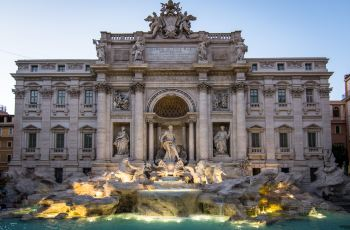
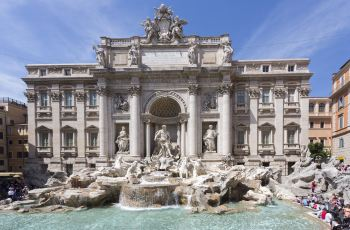

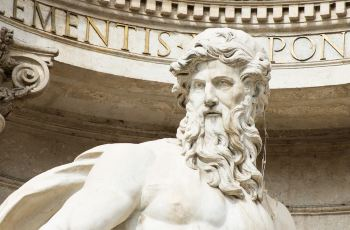
Transportation:
- Air-conditioned Tour Bus + Reference Flight: MU788 departs at 21:10 and arrives at 14:50 the next day (flight duration approximately 11.5 hours).
Meals:
- Breakfast: Hotel breakfast.
- Lunch: T-bone steak meal.
- Dinner: Group meal.
Accommodation:
- On Board the Plane: Overnight stay will be on the plane
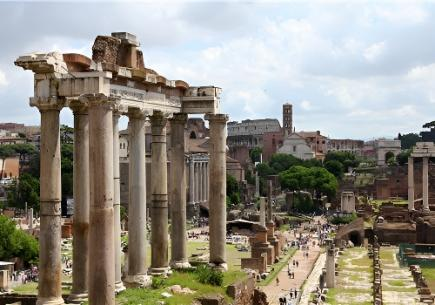
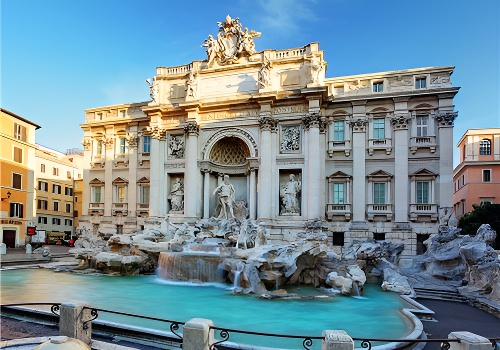
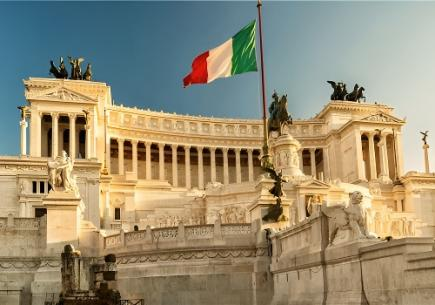
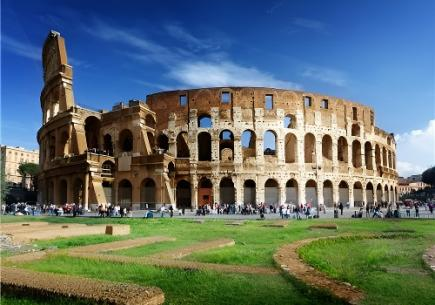
Day 12: Shanghai
Arrive in Shanghai, and the tour comes to a successful conclusion!
Please hand over your passport and return boarding pass to the tour leader for the visa cancellation process at the consulate. According to the consulate’s requirements, some guests may be notified to attend an interview for visa cancellation. Please prepare in advance, and thank you for your cooperation!
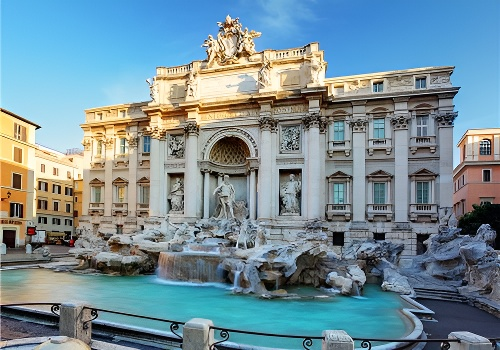
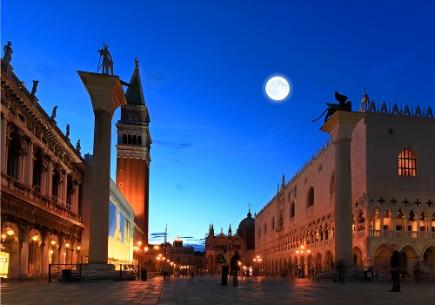
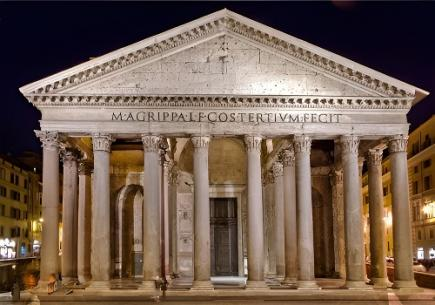
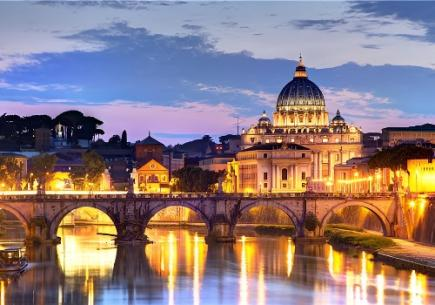
Price:
- Starting from 23,899 RMB per person
Supply Standards
Meals:
- 10 breakfasts and 21 main meals (including 3 specialty meals): Seine River cruise meal, Venetian squid ink pasta, Florentine T-bone steak.
Transportation:
- International round-trip group flights (taxes included, economy class).
- Air-conditioned tour bus.
Accommodation:
- Double rooms in internet-rated 4-star hotels, with one night upgraded to a double room in an internet-rated 5-star hotel, for a total of 10 nights. (Single supplement: 5,200 RMB)
- Hotels rated with internet stars use standards from websites like www.booking.com or www.agoda.com, represented by “☆” or “●” or actual star ratings used by these platforms.
- Locally rated hotels use standards evaluated by authoritative institutions in the destination country or region.
Guide:
- Full-time tour leader accompanying, Chinese commentary, foreign driver.
Admissions:
- Louvre (with official guide commentary); Versailles (with official guide commentary, excluding the gardens); Titlis Mountain; Seine River cruise; Gondola ride; Neuschwanstein Castle.
Insurance:
- Includes personal travel accident insurance.
Complimentary Services:
- 1 Wi-Fi device per 2 people; travel accident insurance.
Exclusions:
- Costs related to travel documents;
- Single supplement fees or extra bed charges;
- Any costs not specified in the contract, including but not limited to expenses for non-contractual items, costs incurred during self-arranged activities;
- Personal expenses incurred during the trip, including but not limited to non-free meals on transportation, excess baggage fees, laundry, communications, beverages and alcohol, entertainment, medical expenses for personal injuries, costs for searching for lost items, and compensation for personal reasons.
Special Pricing Notes:
- Visa fee waiver: 800 RMB (includes round-trip travel, meals, seats, accommodation, and admissions)
- Children under 6 years old sharing a bed with adults pay the same price as adults (includes round-trip travel, meals, seats, accommodation, and admissions)
- Children under 6 years old not sharing a bed (breakfast not included) receive a discount of 5,200 RMB (includes round-trip travel, meals, seats, and admissions)
- For single rooms, a single supplement of 5,200 RMB is required (includes round-trip travel, meals, seats, accommodation, single room supplement, and admissions).
French Group Tourism Visa
- Visa issuance location: Shanghai
- Interview required: Yes
- Target regions: Shanghai, Jiangsu, Guangdong, Yunnan, Jiangxi, Henan, Hunan, Heilongjiang, Hainan, Fujian, Liaoning, Sichuan, Shanxi, Shaanxi, Qinghai, Guangxi, Ningxia, Tibet, Inner Mongolia, Beijing, Jilin, Guizhou, Hubei, Zhejiang, Anhui
- ADS team visa
Latest Submission Date for Materials:
- See specific reminders below
Required Documents:
- Personal Information Form (original)
- Fill out in Chinese with a black pen or electronically and then print.
- Sign in Chinese with a black pen at the end of the personal information form and tour notice.
- Provide personal health information.
- Ensure mobile phone availability.
- Some personal information will be used to fill out your visa application form (filled out by our agency), please ensure that the personal information on the form is accurate.
- Mainland China private passport (original)
- Valid for at least 6 months after the trip.
- Provide all pages of previous passports if applicable; if lost, provide a loss declaration.
- Passport is undamaged.
- At least 2 blank visa pages available.
- Photos (4 original)
- Four recent 2-inch (35mm x 45mm) white background color photos.
- Write name on the back of the photo in pencil.
- All four photos must be identical.
- Photos must not show glasses or jewelry and teeth must not be visible. Head must be straight. Ears and forehead must be visible.
- ID Card (copy)
- Copy of valid ID card front and back on the same A4 page.
- Household Register (copy)
- Continuous copies up to the first blank page.
- If there is a supplementary booklet, provide it.
- For collective household registers, provide a copy of the individual page.
- A valid household certificate can replace the entire household register copy.
- Marriage Certificate (copy)
- Married: provide marriage certificate copy.
- Divorced: provide divorce certificate copy.
- Widowed: no need to provide.
- Property Certificate (copy)
- Copy of property certificate in the applicant’s name (A4 paper), can be shared between spouses or parents and children.
- Include any notes pages.
- Employment Proof (original)
- Follow the template and provide one original. Include applicant’s name, passport number, employment date, salary, position, travel dates, number of days, cost coverage, company address, company phone, company fax, signer’s name, signer’s position.
- Use company letterhead and stamp the company seal. If the company does not have letterhead, create it yourself.
- Employment proof in English template or bilingual template.
- For applicants with monthly income less than 3,500 RMB, provide additional asset proof (copies of large bank statements, stock transactions showing value, investment securities, funds, etc.)
- Conventional signatories are HR manager/specialist or department manager, general manager. Family business co-travelers should not sign for each other.
- Business License / Organizational Code Certificate (original)
- For corporate entities, provide a copy of the Business License stamped with the company seal. For public or government institutions, provide a copy of the Organizational Code Certificate stamped with the company seal.
- Material must be valid; if expired, provide an updated version or a statement from the organization.
- For legal persons or parents who are legal persons and whose children work in their companies, provide a copy of the tax registration certificate and the company’s tax payment certificate for the last three months, both stamped with the company seal.
- Special units unable to provide this material should issue a relevant statement signed and stamped by the HR department.
- Personal Salary Bank Statement (original)
- Provide a bank statement of the last 3 months (1 copy), with a balance of at least 10,000 RMB.
- If the applicant has 2 or more salary cards (including subsidies, bonuses), provide all account statements (at least one with a balance greater than 10,000).
- If salary is paid in cash, indicate this on the employment proof and provide a bank statement of another personal debit card instead, with a balance of no less than 10,000 RMB.
- The statement must be issued by the bank counter and stamped with the business acceptance stamp. The statement must be issued within 15 days prior to the submission of the visa application.
Specific Reminders:
- Deadline for visa materials:
- 30 days before the team’s departure date.
- Deposit-related matters:
- After the visa is issued, you can proceed to the designated bank to handle deposit-related matters.
contact us
company name:北京迈斯国际旅行社有限公司
contact via mail:jasonwang@micetravel.ltd
telephone:010-67018807
— Anna Wong, Volunteer